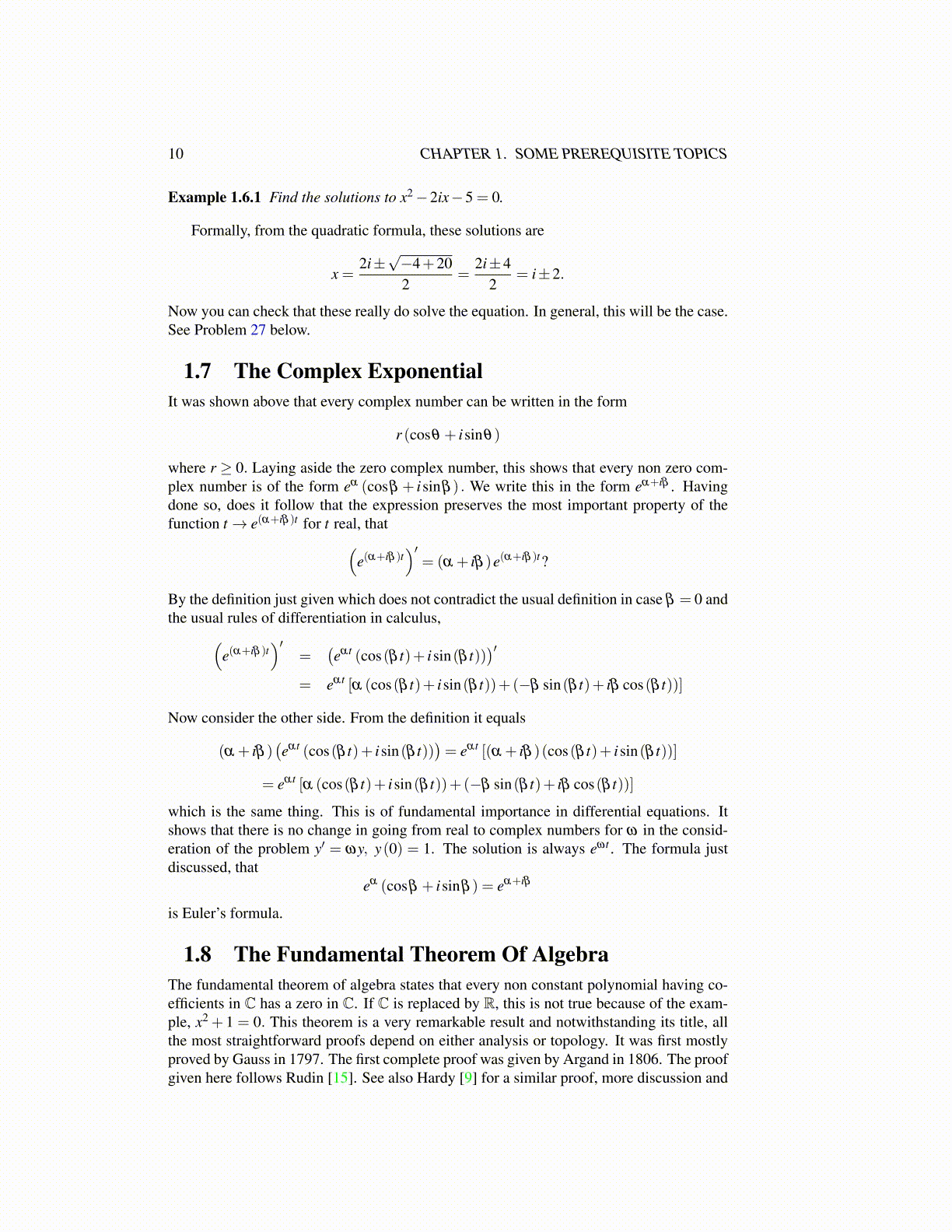
10 CHAPTER 1. SOME PREREQUISITE TOPICS
Example 1.6.1 Find the solutions to x2−2ix−5 = 0.
Formally, from the quadratic formula, these solutions are
x =2i±√−4+202
=2i±4
2= i±2.
Now you can check that these really do solve the equation. In general, this will be the case.See Problem 27 below.
1.7 The Complex ExponentialIt was shown above that every complex number can be written in the form
r (cosθ + isinθ)
where r ≥ 0. Laying aside the zero complex number, this shows that every non zero com-plex number is of the form eα (cosβ + isinβ ) . We write this in the form eα+iβ . Havingdone so, does it follow that the expression preserves the most important property of thefunction t→ e(α+iβ )t for t real, that(
e(α+iβ )t)′
= (α + iβ )e(α+iβ )t?
By the definition just given which does not contradict the usual definition in case β = 0 andthe usual rules of differentiation in calculus,(
e(α+iβ )t)′
=(eαt (cos(β t)+ isin(β t))
)′= eαt [α (cos(β t)+ isin(β t))+(−β sin(β t)+ iβ cos(β t))]
Now consider the other side. From the definition it equals
(α + iβ )(eαt (cos(β t)+ isin(β t))
)= eαt [(α + iβ )(cos(β t)+ isin(β t))]
= eαt [α (cos(β t)+ isin(β t))+(−β sin(β t)+ iβ cos(β t))]
which is the same thing. This is of fundamental importance in differential equations. Itshows that there is no change in going from real to complex numbers for ω in the consid-eration of the problem y′ = ωy, y(0) = 1. The solution is always eωt . The formula justdiscussed, that
eα (cosβ + isinβ ) = eα+iβ
is Euler’s formula.
1.8 The Fundamental Theorem Of AlgebraThe fundamental theorem of algebra states that every non constant polynomial having co-efficients in C has a zero in C. If C is replaced by R, this is not true because of the exam-ple, x2 + 1 = 0. This theorem is a very remarkable result and notwithstanding its title, allthe most straightforward proofs depend on either analysis or topology. It was first mostlyproved by Gauss in 1797. The first complete proof was given by Argand in 1806. The proofgiven here follows Rudin [15]. See also Hardy [9] for a similar proof, more discussion and